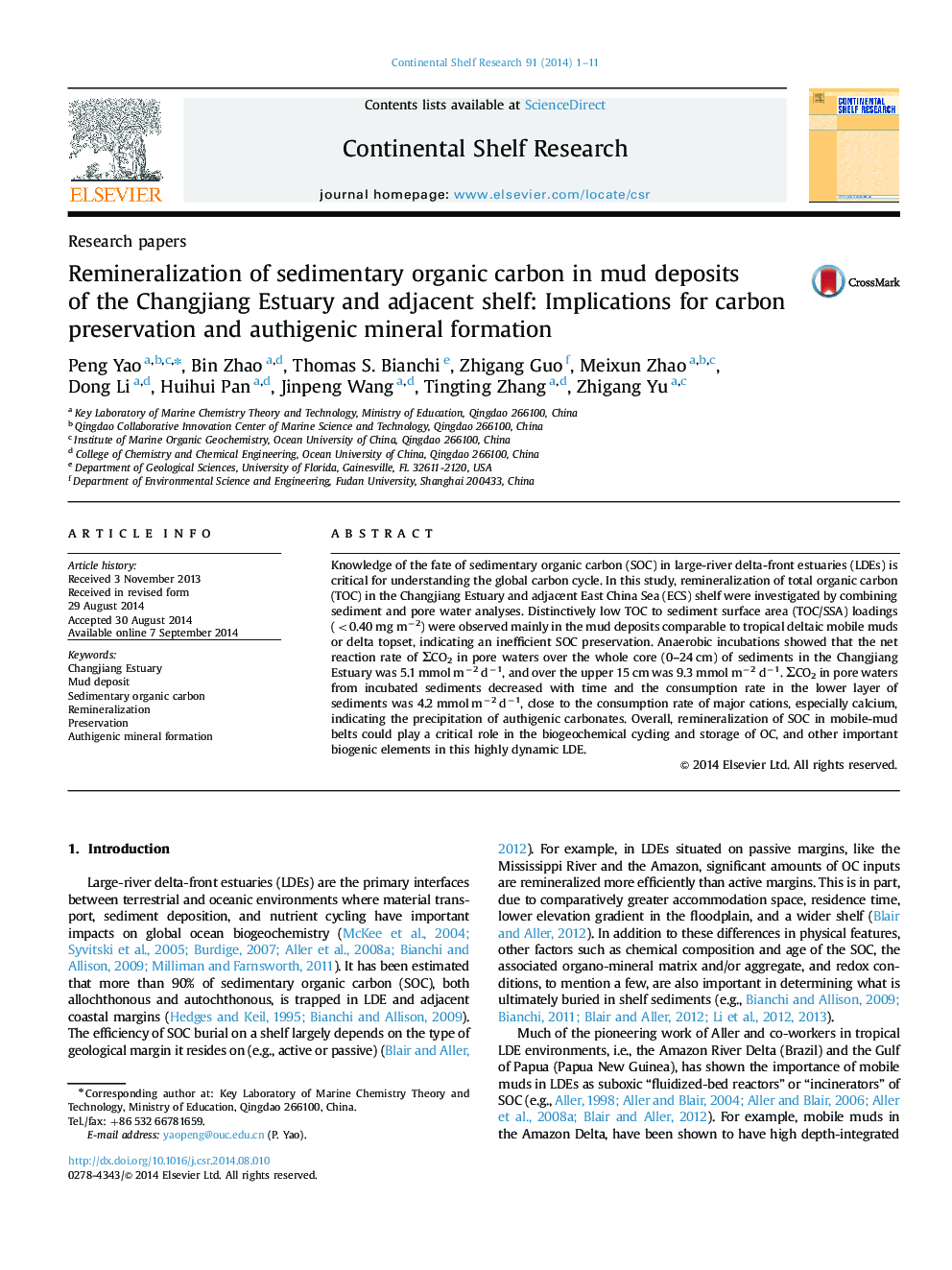| Article ID | Journal | Published Year | Pages | File Type |
|---|---|---|---|---|
| 4531716 | Continental Shelf Research | 2014 | 11 Pages |
•Preservation of organic carbon in Changjiang Estuary and East China Sea sediments.•Role of organic carbon remineralization in mobile-mud deposits.•Linkages between authigenic mineral formation and organic carbon remineralization.
Knowledge of the fate of sedimentary organic carbon (SOC) in large-river delta-front estuaries (LDEs) is critical for understanding the global carbon cycle. In this study, remineralization of total organic carbon (TOC) in the Changjiang Estuary and adjacent East China Sea (ECS) shelf were investigated by combining sediment and pore water analyses. Distinctively low TOC to sediment surface area (TOC/SSA) loadings (<0.40 mg m−2) were observed mainly in the mud deposits comparable to tropical deltaic mobile muds or delta topset, indicating an inefficient SOC preservation. Anaerobic incubations showed that the net reaction rate of ΣCO2 in pore waters over the whole core (0–24 cm) of sediments in the Changjiang Estuary was 5.1 mmol m−2 d−1, and over the upper 15 cm was 9.3 mmol m−2 d−1. ΣCO2 in pore waters from incubated sediments decreased with time and the consumption rate in the lower layer of sediments was 4.2 mmol m−2 d−1, close to the consumption rate of major cations, especially calcium, indicating the precipitation of authigenic carbonates. Overall, remineralization of SOC in mobile-mud belts could play a critical role in the biogeochemical cycling and storage of OC, and other important biogenic elements in this highly dynamic LDE.
